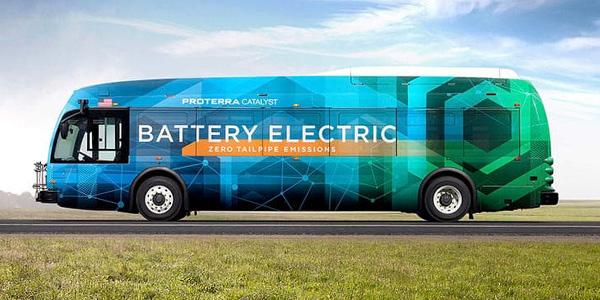In the race to decarbonize the transportation sector, focusing on fleet vehicles, which account for only 3% of registered vehicles in the country, might seem insignificant. But a report by the Rocky Mountain Institute (RMI) says that a successful transition of fleets will influence the rest of the transportation sector.
“Large fleets drive scale, which results in reduced costs of vehicle technology and infrastructure,” RMI said. “And fleets have the market influence to help drive costly inefficiencies out of the system, resulting, for example, in streamlined permitting processes and prioritized utility interconnect processes.”
The think tank says more than 20% of all U.S. vehicles need to be electric by 2030 to limit climate change to 1.5 degrees Celsius, the threshold set in the Paris Agreement on climate change.
Progress in greening U.S. fleet cars is currently hindered by two significant knowledge gaps, according to the report, “Steep Climb Ahead: How fleet managers can prepare for the coming wave of electrified vehicles.”
While fleet managers know how to procure and maintain vehicles, they have little experience in building and maintaining the charging infrastructure for electric vehicles, RMI said. In addition, the organizations running fleets are not versed in utility rate structures.
Driving Without a Map
The report, which is based on a survey of managers responsible for large fleets, found that 81% of organizations have begun electrifying vehicles but that only about half of those have set explicit goals for transitioning their fleets. The report also said many organizations have not been planning for the charging infrastructure required to support their growing green fleets. In fact, investment by organizations has been upside down, going first to vehicles and then to charging infrastructure, where investment in infrastructure should be the priority. A lack of charging stations could act as a cap on EV adoption, the report said.
“Although many fleets have already implemented pilot programs — usually consisting of a few EVs and low-powered chargers, acquired at modest expense — electrifying a fleet at scale involves much more than just adding more EVs and chargers incrementally,” RMI said. “For many organizations, it will mean restructuring their internal business processes, including procurement, accounting, long-term capital project planning, fiscal budgeting, operations and more” to understand their return on investment and total cost of ownership.
The report says the charging infrastructure necessary to serve truck stops and fleet yards with medium- and heavy-duty trucks can take years to plan and build. It says some fleet managers may be surprised to learn that use of public chargers or Level 2 chargers (7.2 kW) will not suffice and that they will have to install more expensive direct current fast charge (DCFC) units (150 kW).
Of the total number of charge stations in the U.S., DCFC accounts for about 15%, according to the consulting firm EVAdoption. The RMI report said fleet managers planning to expand EV procurement need to begin talks with their utility “at least three years before they expect to actually need the power.”
“We strongly suspect that many fleet managers are in for some unpleasant shocks when they receive the first utility bills for their first set of DCFC,” the report added.
As a result, fleet operators will need “a much more extensive relationship with their local utilities,” RMI said. “And it will mean much more proactive involvement with city and county officials, including local building and planning authorities.”
The report recommends fleets consider “charging as a service” to navigate the complexity of managing vehicle charging around their duty cycles.
Wall Street Takes Notice
The growing infrastructure needs of EVs are attracting attention on Wall Street. Among those offering charging as a service is ChargePoint, which plans to go public next month. EVgo, which has more than 800 fast charging locations in 34 states, also is planning a public offering. And Royal Dutch Shell announced Monday that it is acquiring Ubitricity, the U.K.’s largest EV charging network, in a bid to diversify from fossil fuels.
Jonathan Levy, chief commercial officer for fast EV charger provider EVgo, told RTO Insider that the company is working with fleet managers “to inform their best path to convert their vehicles to EVs.”
Charging solutions will vary “depending on the particular use case,” Levy said.
A Solution Set
RMI’s findings of a knowledge gap among fleet managers are also echoed in a report prepared by the Center for Transportation and the Environment (CTE), released this month by the Federal Transit Administration (FTA).
The report summarizes the discussions of FTA’s Transit Vehicle Innovation Deployment Centers (TVIDC) Advisory Panel on the challenges of electrifying municipal bus fleets. Prior to the adoption of battery-electric buses (BEB), few transit authorities had experience working with utilities as suppliers of bus fuel, the report says. Similarly, utilities are still early in the learning curve of BEB technology and its infrastructure and power requirements.
“Both industries still lack answers for how best to affordably and effectively deploy large-scale electric charging infrastructure at existing transit facilities,” the report said. The learning curve issues were also the subject of discussions at CTE’s Zero Emission Bus Conference last fall. (See Takeaways from the Zero Emission Bus Conference.)
To alleviate costly surprises for fleet managers, the TVIDC panel suggested that an FTA-sponsored, cross-industry working group develop frameworks that help fleet owners and utilities with common issues, such as infrastructure scaling and installation; liability and equipment testing; and certification.
The panel also suggested that making a planning guidebook available to fleet managers could ensure they understand utility operations, power planning and rate-setting issues.

